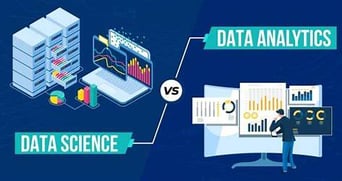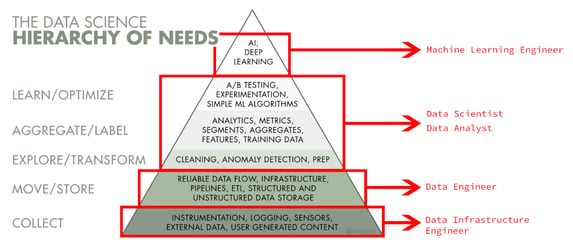The Role of Data Scientists: Unveiling the Mysteries
Data science is one of the most dynamic and evolving fields in the tech industry today. But what exactly do data scientists do, and how do their roles differ from data analysts? Let’s dive into the fascinating world of data science and uncover the key responsibilities and skills that set data scientists apart.
Eliana Glasiuk
9/6/20243 min read


What Do Data Scientists Do?
Data scientists wear many hats and juggle various tasks to derive meaningful insights from data. Here’s a snapshot of their core responsibilities:
1. Using Machine Learning and Deep Learning to Build Better Prediction Models
· Data scientists leverage sophisticated algorithms to make accurate predictions
about future trends. This involves training models on historical data and refining
them for better performance.
2. Cleaning Up and Pre-Processing Data (Data Wrangling)
· They take raw data from various systems, clean it up, and transform it into a format
suitable for analysis. This step is crucial because the quality of the data greatly influences
the accuracy of the models.
3. Evaluating Statistical Models and Results
· Data scientists assess the validity of their analyses by evaluating statistical models. This helps ensure that the results are reliable and can be trusted to inform business decisions.
4. Testing and Continuously Improving Machine Learning Models
· The work doesn’t stop once a model is built. Data scientists constantly test and improve their models to maintain accuracy and relevance as new data becomes available.
5. Building Data Visualizations
· Much like data analysts, data scientists create visualizations to summarize the
conclusions of advanced analyses. These visual aids help communicate findings
in an accessible and impactful way.
How to Differentiate a Data Scientist from a Data Analyst?
The roles of data scientists and data analysts often overlap, leading to some confusion. However, they have distinct responsibilities and skill sets. Let’s explore these differences.
Data Science Hierarchy of Needs
To understand the distinction better, it’s helpful to think about the Data Science Hierarchy of Needs, inspired by Maslow’s Hierarchy of Needs. This concept emphasizes the foundational skills required for data science and helps clarify the roles of data scientists and data analysts. You can read more about these topics in "The Data Science Hierarchy of Needs" by Dr. Emmanuel Ogungbemi, Head of Data Engineering. Dr. Ogungbemi focuses on improving productivity through data and AI.
The Perpetual Debate: The debate between data analysts and data scientists is ongoing. What sets these roles apart? Here’s a clear comparison:
Data Analysts:
Tools Used: Excel, SQL, Tableau, Power BI.
Focus Areas: Data analysts primarily focus on collecting, processing, and performing basic analyses on data. Their work involves creating reports and visualizations to help businesses make informed decisions.
Skills Required: They don’t necessarily need deep knowledge of advanced statistics or machine learning. Proficiency in tools like Excel and BI software is often sufficient.
Data Scientists:
Tools Used: Python, R, TensorFlow, Hadoop.
Focus Areas: Data scientists delve deeper into data to develop predictive models and algorithms using machine learning and deep learning techniques. They handle more complex tasks that involve programming and advanced statistical methods.
Skills Required: They need to be proficient in programming languages and have a solid understanding of machine learning algorithms and advanced statistical techniques.
In Summary
While data analysts focus on descriptive analytics,
data scientists work on predictive and prescriptive analytics.
In simple terms, data scientists can do everything a data analyst
can do, plus they have additional skills in programming and machine
learning that allow them to tackle more complex problems.







